Colt .45 ACP 1911 Pistol, 5" Barrel, Silver – O1080CCS For Sale
$950.99
The Colt .45 ACP 1911 Pistol, model O1080CCS, is a high-performance competition firearm designed for exceptional precision and control in timed events. It features a 5-inch National Match Barrel for optimal accuracy, and is constructed from durable, corrosion-resistant stainless steel. The pistol is ergonomically enhanced with custom G10 grips and an upswept beavertail grip safety, ensuring a comfortable and secure hold. The undercut trigger guard allows for a low hand position to promote stability, while the Novak adjustable fiber optic sights improve target acquisition in various lighting. Ideal for competitive shooters, this Colt 1911 blends superior craftsmanship with the demands of precision shooting.
Is .45 Colt and .45 ACP the same?
No, .45 Colt and .45 ACP are not the same. .45 Colt, also known as .45 Long Colt, is a longer revolver cartridge developed in the 19th century, while .45 ACP (Automatic Colt Pistol) is a shorter cartridge designed for semi-automatic pistols, developed in the early 20th century. They have different case dimensions, applications, and are not interchangeable.
How much is a classic 1911 Colt?
The price of a classic 1911 Colt can vary significantly based on factors such as the model, condition, age, and any historical significance. Generally, prices can range from a few hundred dollars for a basic used model to several thousand dollars for rare or highly collectible pieces. It’s important to research current market prices or consult a trusted firearms dealer or appraiser for a more accurate valuation.
Why do 1911s jam so much?
The 1911 pistol, designed over a century ago, can experience jamming issues for several reasons, particularly with modern iterations or poorly maintained models:
1. **Ammunition Sensitivity:** The 1911 was originally designed for .45 ACP ball ammunition. Using non-standard ammunition, like hollow points or lighter loads, can cause feeding issues.
2. **Tight Tolerances:** Modern 1911s often have tighter manufacturing tolerances compared to the original military models, which can lead to less reliability if not properly maintained since dirt and residue might affect their performance.
3. **Magazine Issues:** Many jamming problems arise from faulty or low-quality magazines. The feed lips and springs must be in good condition to ensure reliable cycling.
4. **Maintenance:** The 1911 requires regular cleaning and lubrication. Due to its all-metal construction and moving parts, neglecting maintenance can lead to increased friction and failure to cycle properly.
5. **Extractor Tension:** Improper extractor tension can cause failures to eject or feed. The extractor needs to be correctly calibrated to ensure reliable operation.
6. **Recoil Spring:** An old or weak recoil spring can fail to cycle the slide properly, leading to jams. Regular replacement according to the manufacturer’s recommendations is advisable.
Addressing these factors usually improves the reliability of a 1911 pistol. Quality components, proper maintenance, and using appropriate ammunition are key to reducing jams.
How much did a 1911 cost in 1911?
In 1911, the Colt M1911 pistol was priced at approximately $15 to $16 when it was initially adopted by the U.S. military. However, prices could vary slightly depending on the retailer and any additional features or configurations.
Can a 45 ACP be shot in a 45 Long Colt?
No, a .45 ACP cannot be safely shot in a .45 Long Colt firearm. The .45 ACP (Automatic Colt Pistol) and .45 Long Colt (also known as .45 Colt) are different cartridges with distinct dimensions and specifications. Attempting to fire a .45 ACP in a .45 Long Colt chamber could result in dangerous malfunctions or damage to the firearm. Always use the appropriate ammunition for your firearm, as specified by the manufacturer.
Is 45 Colt stronger than 9mm?
Yes, in general, the .45 Colt is considered to be stronger than the 9mm Parabellum (9x19mm). The .45 Colt typically fires a larger and heavier bullet compared to the 9mm, resulting in more impact energy. However, “stronger” can have different interpretations depending on the context, such as penetration, velocity, or stopping power. The .45 Colt’s larger bullet diameter and increased mass give it greater stopping power, while the 9mm is often favored for its higher velocity, lower recoil, higher magazine capacity, and more modern firearm compatibility.
Do Colt 1911 hold their value?
Yes, Colt 1911 pistols generally hold their value well. They are considered classic firearms with historical significance, and there is consistent demand from collectors and enthusiasts. Their reputation for quality and reliability also contributes to their strong resale value. Specific models, especially those with historical significance or limited production, may even appreciate over time.
Why is the Colt 1911 so famous?
The Colt 1911 is famous for several reasons:
1. **Historical Significance**: Designed by John Browning and adopted by the United States military in 1911, it served as the standard-issue sidearm for the U.S. Armed Forces until 1985. Its widespread use in both World Wars, the Korean War, and the Vietnam War contributes to its iconic status.
2. **Innovative Design**: The Colt 1911 introduced several innovative features for its time, including a semi-automatic mechanism and a .45 ACP cartridge, which provided significant stopping power. Its design has influenced countless other firearms.
3. **Reliability and Performance**: Known for its durability and reliability, the 1911 performs well under adverse conditions. Its simple design and robust construction have made it a favorite among military personnel, law enforcement, and civilian shooters.
4. **Cultural Impact**: Its presence in numerous films, television shows, and video games has cemented its status as a cultural icon. The 1911 is often associated with heroism and the classic image of a handgun.
5. **Customization and Variants**: The 1911 has a large following due to its highly customizable nature. Numerous manufacturers produce variants, and many owners modify their pistols, which adds to its enduring popularity.
6. **Ergonomics and Handling**: Many shooters appreciate the 1911’s ergonomic design, which offers a comfortable grip and user-friendly controls, contributing to its appeal as a tactical and recreational firearm.
These factors combined have helped establish and maintain the Colt 1911’s fame over the decades.
Is a 38 super stronger than a 9mm?
Yes, the .38 Super is generally considered to be more powerful than the standard 9mm Parabellum (9x19mm). The .38 Super cartridge is capable of higher velocities and energy levels, which can result in improved performance, such as better penetration and greater stopping power. However, the extent of this difference can depend on various factors, such as specific loadings and firearm design.
What is the weakness of the 1911?
The 1911 pistol, while a classic and widely respected firearm, has a few notable weaknesses:
1. **Magazine Capacity**: The standard 1911 typically holds only 7 to 8 rounds in its magazine, which is relatively low compared to more modern pistols that can hold 15 or more rounds.
2. **Weight and Size**: The 1911’s all-metal construction makes it heavier, which can be a drawback for carrying. Its full-size frame is also bulkier than many modern polymer-framed pistols.
3. **Complexity and Maintenance**: The 1911’s design is more complex than many newer pistols, requiring more tools and time for disassembly and maintenance. Its multiple safeties and intricate parts may not be ideal for those looking for a simpler firearm.
4. **Reliability with Modern Ammunition**: Some 1911s, especially those not made by reputable manufacturers or those that haven’t been properly maintained, may have feeding issues with modern hollow-point ammunition.
5. **Customization Pitfalls**: While the 1911 is highly customizable, improper modifications or low-quality aftermarket parts can lead to reliability and function problems.
These factors make the 1911 less favorable for some users, particularly when considering it for everyday carry or tactical purposes where modern alternatives might be preferred.
Which gun is known for jamming?
The M16 rifle, particularly the early models used during the Vietnam War, is known for having issues with jamming. These malfunctions were often attributed to several factors, including the use of the wrong type of gunpowder in the ammunition and the lack of proper cleaning and maintenance instructions provided to soldiers.
Do 1911s jam with hollow points?
1911 pistols can experience feeding issues with hollow point ammunition, though this is not guaranteed and varies based on several factors. The original 1911 design was based around full metal jacket (FMJ) rounds, which often feed more reliably due to their round-nose shape. Hollow points have a different shape that can sometimes cause feeding issues in firearms that aren’t specifically tuned or designed for them.
However, many modern 1911 manufacturers produce models specifically designed or adjusted to feed hollow points reliably. These can include features such as ramped barrels, throated chambers, and polished feed ramps. Additionally, using high-quality, well-maintained magazines, and ensuring the firearm is properly maintained can also improve reliability with hollow point ammunition.
In summary, while some 1911s might jam with hollow points, many can be made to function reliably with them through proper tuning and maintenance.
What is the difference between the 1911 and the 1911a1?
The main differences between the M1911 and the M1911A1 handguns are based on design and ergonomic improvements:
1. **Backstrap and Grip**: The M1911A1 features a shorter trigger and a cutout in the frame behind the trigger, allowing for a better grip on the pistol.
2. **Hammer Spur**: The hammer spur on the M1911A1 is shorter to reduce the risk of “hammer bite,” where the hammer can pinch the skin of the shooter’s hand.
3. **Sights**: The sights on the M1911A1 are slightly larger than those on the original M1911, enhancing target acquisition and aiming.
4. **Finger Relief Cut**: The M1911A1 has small scalloped recesses, known as “finger relief cuts” or “clearance cuts,” on both sides below the grips to provide better access to the trigger.
5. **Grip Safety**: The grip safety on the M1911A1 is extended with a longer tang to prevent discomfort or pinching during firing.
6. **Main Spring Housing**: The main spring housing on the M1911A1 is arched, as opposed to the flat design on the M1911, which changes the grip angle slightly.
These modifications made the M1911A1 more user-friendly and better suited for various hand sizes and shooting conditions.
How much was $100 worth in 1911?
The value of $100 in 1911 would be significantly higher today due to inflation. To determine the equivalent value in today’s terms, you would generally use a historical inflation calculator. However, without access to the most current data or a specific year to compare to, it’s not possible to provide the exact equivalent value here. As of recent estimates, $100 in 1911 could be worth approximately $3,000 or more today, depending on the specific year used for comparison. For accurate calculations, you could use an online inflation calculator that includes data up to your year of interest.
What are the three sizes of 1911?
The three common sizes of the 1911 pistol are:
1. **Full Size (Government Model):** This typically has a 5-inch barrel and is the original size for the 1911 design.
2. **Commander Size:** This model usually features a 4.25-inch barrel, offering a slightly more compact option while maintaining good shooting characteristics.
3. **Officer Size:** The Officer model generally comes with a 3.5-inch barrel, making it more suitable for concealed carry due to its smaller size.
Be the first to review “Colt .45 ACP 1911 Pistol, 5" Barrel, Silver – O1080CCS” Cancel reply
Related products
Colt .45 ACP 1911
Colt 1911 .45acp Rail Gun M45A1 Pistol , Decobond Brown – O1070M45
Colt .45 ACP 1911
Colt .45 ACP 1911 Pistol, 5" Barrel, Fiber Optic Sights, Silver, Black – O5970XETT
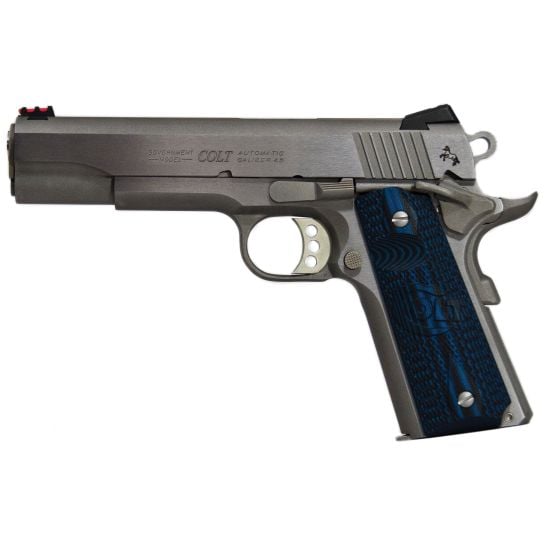
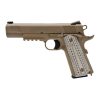
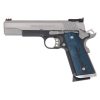
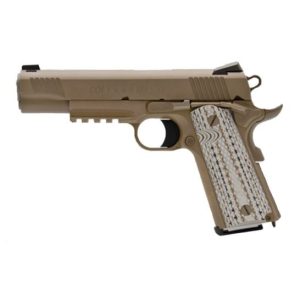
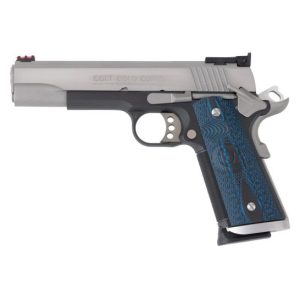
Reviews
There are no reviews yet.